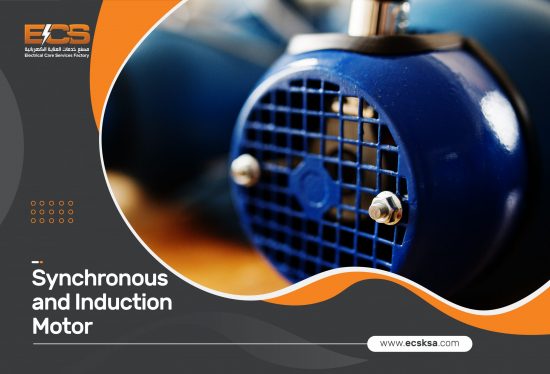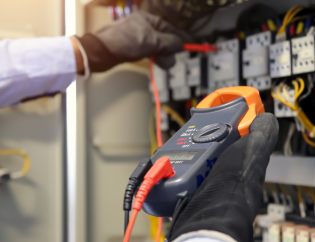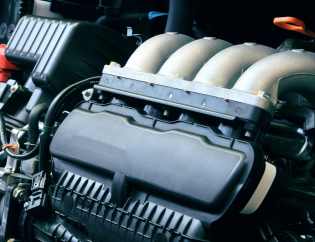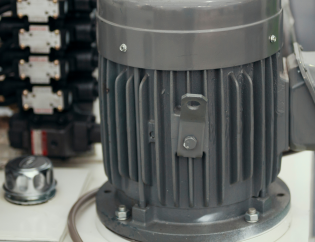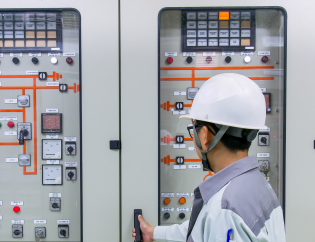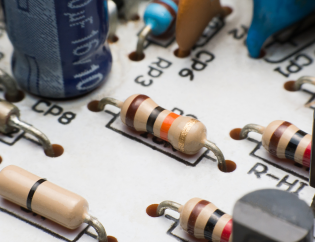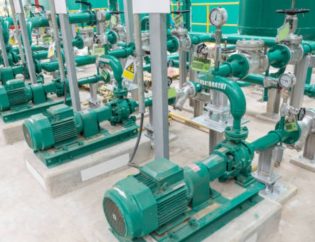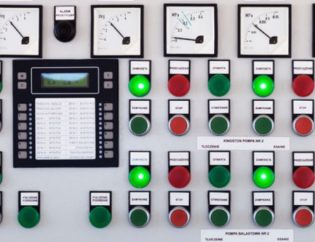What is a Synchronous Motor?
A synchronous motor is a type of electric motor that runs at a constant speed and is synchronized with the power frequency. It generates a magnetic field that rotates in time with the AC supply. The magnetic field of the rotor, which is the rotating part of the motor, is locked in step with the magnetic field of the stator, which is the stationary part of the motor. This creates a rotating magnetic field that drives the rotor.
Synchronous motors can be used for both driving and generating applications. They are connected to a power source and run at a constant speed when used as a drive. They are driven by an external power source and generate AC power when used as a generator.
Synchronous motors are commonly used in applications requiring precise speed control, such as in power generation, oil and gas pipelines, and printing presses. They are also used in applications where the load requires a constant speed, such as in the case of fans, pumps, and conveyors.
One of the advantages of synchronous motors is their high efficiency and low power factor, which makes them an attractive option for industrial and commercial applications. They are also reliable, durable, and have a long operating life, making them a cost-effective solution for many applications.
What is Induction Motor?
An induction motor is a type of electric motor that operates by inducing an electromotive force (EMF) in the rotor. It works by generating a rotating magnetic field in the stator, which induces an electromotive force in the rotor. This electromotive force drives the rotor to rotate.
Induction motors are the world’s most widely used type of electric motor. They are commonly used in industrial and commercial applications where variable speed is not a requirement and are more rugged and simple in construction than other types of motors, such as synchronous motors.
Induction motors come in two main types: single-phase induction motors and three-phase induction motors. Single-phase induction motors are used in small applications, such as household appliances and tools, while three-phase induction motors are used in industrial and commercial applications, such as pumps, fans, and conveyors.
The speed of an induction motor is lower than the speed of the rotating magnetic field, and this difference in speed is called slip. The slip is proportional to the motor’s load, allowing induction motors to maintain a nearly constant speed under varying load conditions.
One of the main advantages of induction motors is their simplicity and ruggedness, which makes them ideal for use in harsh environments. They are also highly efficient and have a long operating life, making them a cost-effective solution for many industrial and commercial applications.
Advantages and Disadvantages of Synchronous Motor
Advantages of Synchronous Motors
- Constant speed: Synchronous motors run at a constant speed, which makes them ideal for applications that require precise speed control, such as power generation and printing presses.
- High Efficiency: Synchronous motors have a high efficiency and low power factor, which makes them an attractive option for industrial and commercial applications.
- Reliability: Synchronous motors are known for their reliability and durability, making them a cost-effective solution for many applications.
- Versatility: Synchronous motors can be used for both driving and generating applications, making them a versatile solution for a wide range of applications.
Disadvantages of Synchronous Motors
- Complex construction: Synchronous motors are more complex than induction motors, making them more expensive to manufacture and maintain.
- High initial cost: Due to their complexity, synchronous motors tend to be more expensive than induction motors, making them less cost-effective for small-scale applications.
- High maintenance: Synchronous motors require more maintenance compared to induction motors, which can be a disadvantage in applications where maintenance access is limited.
Advantages And Disadvantages of Induction Motor
Advantages of Induction Motors
- Simplicity: Induction motors are simple and rugged in construction, making them ideal for use in harsh environments.
- High Efficiency: Induction motors are highly efficient and have a long operating life, making them a cost-effective solution for many industrial and commercial applications.
- Versatility: Induction motors are available in single-phase and three-phase configurations, making them versatile for various applications.
- Low initial cost: Induction motors are less expensive to purchase compared to synchronous motors, making them a cost-effective solution for small-scale applications.
Disadvantages of Induction Motors
- Variable speed: Induction motors tend to run at a variable speed, which can be a disadvantage in applications that require precise speed control.
- Slip: The speed of an induction motor is lower than the speed of the rotating magnetic field, which can result in a loss of power and reduced efficiency.
- Limited starting torque: Induction motors have limited starting torque compared to synchronous motors, making them unsuitable for applications requiring high starting torque.
Conclusion
In conclusion, synchronous and induction motors have their own advantages and disadvantages, and the choice between them depends on the application’s specific requirements. Synchronous motors offer high efficiency, precise speed control, and versatility but are more complex in construction and have a higher initial cost. Induction motors are simple, rugged, and less expensive but have a variable speed and limited starting torque. Understanding the differences between synchronous and induction motors can help select the right motor for a particular application.
Choose ECSKSA for your motor needs and experience the benefits of high-quality Synchronous and Induction Motors. Contact us today to learn more about how we can help power your operations.
FAQs
1. How does the efficiency of a synchronous motor compare to that of an induction motor?
Synchronous motors typically have a higher efficiency than induction motors, but this can vary depending on the specific application. In general, synchronous motors are more efficient than induction motors due to their precise speed control and ability to operate at optimal conditions.
2. Are synchronous motors more expensive than induction motors?
Synchronous motors are typically more expensive than induction motors due to their complex construction and higher initial cost. However, their high efficiency and precise speed control can result in lower operating costs and improved performance in certain applications.
3. Can a synchronous motor be used as a generator?
Yes, synchronous motors can be used as generators by applying a load to the rotor and generating electrical power. Due to their high efficiency and precise speed control, they are often used in renewable energy systems, such as wind turbines and hydroelectric power plants.
Do you have a question in your mind? If so, make sure to fill out the form below!

